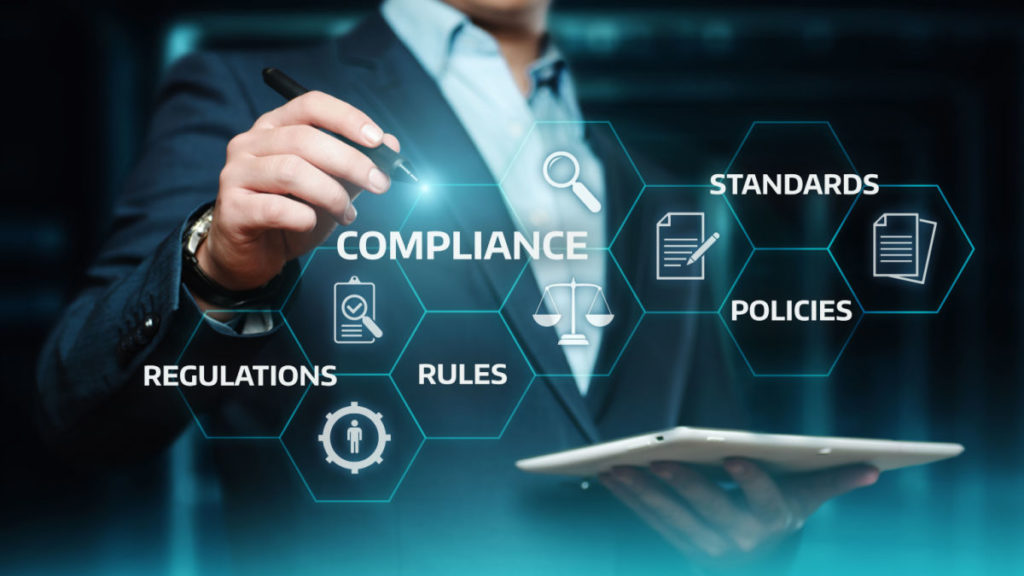
Most governing bodies worldwide have woken up to the data privacy concerns that arise from modern connected software. The growing number of geographically oriented compliance standards they issue in response are complex and ever-changing, creating unique challenges for business leaders to manage.
Meeting various data compliance standards is incredibly important for international businesses, as they ensure that data is secured, maintained, and used appropriately. Below, we’ll provide guidance on how to manage these complex standards to ensure that data is collected and managed effectively, securely, and in a compliant manner. Much of it boils down to understanding when you are collecting sensitive data, how you are securing it, and if you are providing the appropriate means for users to control their data.
Understanding Key Data Compliance Standards
The first step to effectively managing complex geopolitical data compliance standards is understanding them. It’s essential to be aware of the different standards that apply in different countries, as well as the regulations and laws that govern the collection, storage, and use of data. Large international organizations, especially those working with high-risk sensitive data, will be hard-pressed to comply with an ever-increasing number of regulations.
In terms of global regulations, General Data Protection Regulation (GDPR) is arguably the most well-known. The EU regulation’s principles state that companies must lawfully collect and store data only with user consent. Within the U.S., the California Consumer Privacy Act (CCPA) is a law that requires companies to provide certain information to customers when they request it. Other state-based data privacy laws are slowly coming into effect, such as the Virginia Consumer Data Protection Act (VCDPA), Colorado Privacy Act (CPA), and Utah Consumer Privacy Act (UCPA).
Some data compliance standards also pertain to certain industry sectors. For example, healthcare has specific requirements around data privacy. This is governed mainly by HIPAA standards, which protect the privacy of patient health records. Or, within the financial services sector, a number of new regulations require the opening of financial data, also known as open banking.
Which companies are the most important vendors in data modernization? Click here to see the Acceleration Economy Top 10 Data Modernization Short List, as selected by our expert team of practitioner analysts.
Tips for Managing Data Compliance
So, how can companies ensure they comply with key data standards? Well, once you understand the data standards that apply in your region, it’s important to utilize the correct approaches to ensure compliance. Let’s consider some methods to manage them effectively.
Track What Is Collected
It’s helpful to identify what constitutes personally identifiable information (PII) and to always ask for user consent when you are collecting sensitive personal data. Depending on the jurisdiction and its definitions, certain data types may fall under regulatory scrutiny, and others might not.
Know Where Your Data Is
Secondly, after you’ve identified what type of data is being collected, understand where this data is. Knowing where user data is resting is essential to complying with national boundaries. Additionally, keeping a better data inventory is a good first step to avoid leakages.
Automate Data Retrieval Operations
Some new data regulations give users the right to request a transcript of their data. However, complying with this request might be highly challenging if user data is stored in various locations and must be manually retrieved. As such, companies should invest in automation for collecting user data and sharing a copy of that data in a standardized format.
Have a Data Deletion Process
Similarly, some data standards give users the right to delete their entire data portfolio upon request. Thus, companies should automate the operations of deleting or de-identifying personal data records.
Secure Data Against Breaches
Perhaps most importantly, organizations should emphasize strengthening the security of private data. Doing so is critical as data breaches escalate and cybersecurity exploits become more advanced. Companies have a financial incentive to avoid sensitive data from falling into the wrong hands.
Some methods to secure sensitive data include introducing encryption, multi-factor authentication, avoiding broken authorization, and applying the rule of least privilege. In general, organizations should seek to adopt a zero-trust model around sensitive endpoints and follow common cybersecurity frameworks.
Data Backup and Recovery
In the case of an emergency that results in data loss, organizations should have a data loss prevention plan in place. One plan for data recovery is to copy databases across multiple computing regions or clouds. Another is to store snapshots of databases at regular intervals so you can back up to an older version.
Loop in the Right Experts
Data standards are manifold and complex, but developers shouldn’t be expected to be legal experts or compliance experts. Therefore, companies should bring in data compliance and privacy experts who understand the intricacies of each law and can provide advice and guidance on how to manage the data correctly.
Develop a Comprehensive Compliance Plan
Finally, it is important to develop an effective compliance plan to manage data appropriately. This plan should outline the steps to ensure compliance with the relevant data compliance standards, as well as any policies and procedures that need to be put in place. This may also include using software programs, such as data security and privacy solutions, which can help you to ensure that data is collected, stored, and used in a secure and compliant manner. It’s also important to ensure that the plan is regularly reviewed and updated.
Data Compliance: Avoid Inaction
Gartner predicts that by 2024, over 75% of the world’s population will have its personal information covered under current privacy regulations. Managing these geographical data compliance standards can be difficult, but it’s essential to ensure data is secure and used correctly. Otherwise, organizations may be faced with hefty fines, not to mention the risk of a loss in consumer trust.
Above, we provided advice and guidance on managing these complex standards, including understanding the relevant standards, utilizing the right strategies, and developing an effective compliance plan. However, the most important takeaway is to avoid inaction. Companies owe it to their customers to protect their data. Despite much regulatory uncertainty around data standards, it should not serve as an excuse for companies to delay increasing their data security initiatives.
By following the above action points, you can ensure that data is collected, stored, and used securely. However, consider these as baseline tips to keep in mind as you get started, as much more goes into a holistic data compliance strategy. Check with your company’s legal and data privacy teams to ensure compliance with the nuances of each specific geographic standard.
Want more insights into all things data? Visit the Data Modernization channel:







